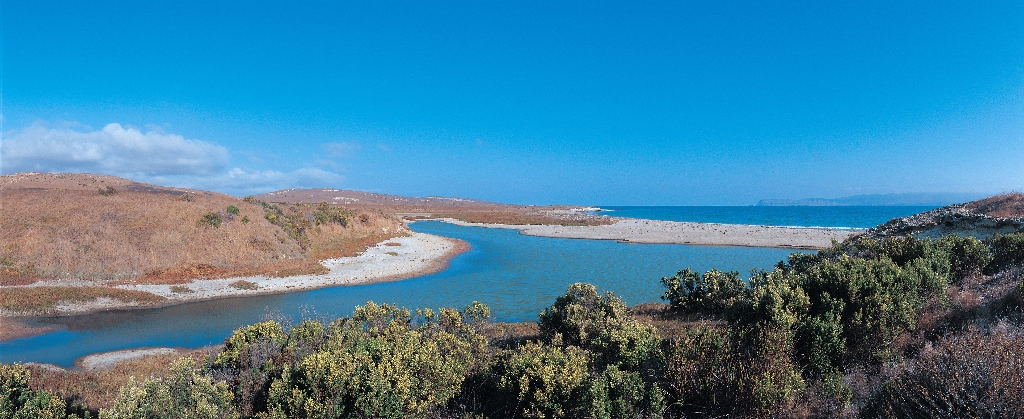
Just north of East Point is Abalone Rocks Marsh, the second largest wetland on the northern islands (Prisoners Harbor wetland on Santa Cruz is the largest). This rare habitat (over 90 percent of California's coastal wetlands have been eliminated) provides respite from the long, dry summers for a diverse array of species, including the island fox. The wetland also serves as a resting and feeding stop for migratory birds and nesting habitat for resident waterfowl.
Sediment column analysis from the marsh has revealed fire and vegetation change on Santa Rosa Island. As the climate changed, forest communities were replaced by mixed grassland and scrub communities around 12,000 years ago. After about 6,900 years ago, precipitation increased and a variety of communities developed, including grassland, oak grassland, pine woodland, and coastal scrub. During the historic period, vegetation changed significantly to grasslands with the introduction of nonnative grazing animals.
Fires appear to have been more frequent in the wetter periods than in the drier periods, with a probable increase after about 6,900 years ago as Island Chumash settlement and cultural complexity increased. This suggests that Island Chumash burning was an important ecosystem component on the northern Channel Islands.
Is there something we missed for this itinerary?
Itineraries across USA


















































